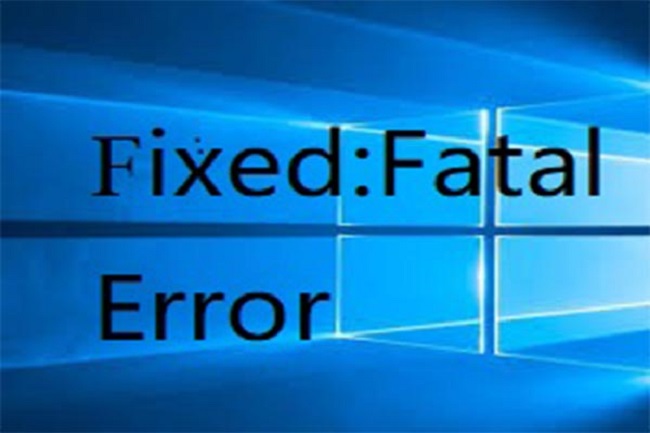The fact that we utilise USB devices on a daily basis is enough to warrant making it a high priority. Nevertheless, it might be a real pain when the computer won’t recognise the USB port. The “USB Device Descriptor Request Failed” Error is a simple error with a fancy name if you are experiencing this problem.
The USB Device Descriptor Request Failed problem can be caused by a number of different things. Because it is used to store data for a USB drive, the USB device descriptor is responsible for identifying distinct USB devices. If your PC is unable to recognise the drive, you will receive this message.

USB Device Descriptor Request Failed Error
So, what can be done to resolve USB Device Descriptor Request Failing? That’s what we’re here for, after all! Scroll down to see our list of five quick and easy solutions to this problem.
1. Go to Device Manager
If your USB drivers become corrupt or stop working, you may want to consider uninstalling them rather than attempting to restore them.
When it comes to simple devices, Windows will take care of installing the required drivers for you. To test this hypothesis, let’s attempt to delete the USB driver from the system.
Step 1: To open the Run window, press ‘Windows + R’ and type “devmgmt.msc” in the box, and then press Enter. Next, expand “Universal Serial Bus Controllers” in the “Device Manager” and look for the defective USB device that was displaying that error and wasn’t appropriately recognised by the operating system.
Step 2: You can remove it by selecting “Uninstall” from the context menu that appears when you right-click on it. Restart your computer when the device has been removed. Those drivers will be installed automatically by the Windows operating system.
2. USB Drivers
The driver can act up from time to time, but most of the time it’s OK. Because you never know if your USB device will be detected each time you insert it into your laptop, this can be very aggravating. That being the case, updating the driver is an option if uninstalling and reinstalling doesn’t work. To accomplish this, follow these steps:
Step 1: Get an auto-driver-updater tool to begin with. Your system’s drivers will be recognised and the best drivers will be found automatically. Second, launch the tool and then select Scan Now. Your computer’s drivers will be scanned by this software, and any issues will be found.
Step 2: It’s now time to look for the “Outdated” USB driver, and click the “Update” icon next to it. The “Update All” option can be used to install the correct version of all the outdated drivers on your machine, however this will require the “Pro” version of this software.
3. Remove the Power Supply
Input-output ports and their BUS lines may fail if your laptop’s primary power source or the laptop’s power brick fail. Follow these methods to fix your power supply if it’s having this issue:
Step 1: Unplug the laptop’s power cord first. After that, restart the computer and attach the USB device to the port that displayed USB device descriptor failed on the screen.
Step 2: Reconnect the laptop’s power source and verify whether or not the device is detected.
Unplugging everything and re-starting your computer may not have fixed the problem. Check if this USB device descriptor failed problem still occurs after disconnecting the USB device from the power supply. If that’s the case, move on to the next option.
4. Fast Startup Mode
A fast boot-up of your Windows OS can prevent the external device from being identified. The “USB Device Descriptor Failed” error will be thrown. Because of this, it is recommended that you disable the “Fast Boot” option under “Power Options.” To get the same result, perform the steps outlined in the following paragraphs:
Step 1: Open the “Run Box” by pressing ‘Windows + R.’
Step 2: Next, in the Run window, type “control” and press the ‘Enter’ key. Open the “Control Panel” by clicking on here. Select “Large icons” from the “View by” drop-down menu, then click on “Power Options.”
Step 3: Next, select the “Choose what the power buttons do” option from the left pane, and then press the power button. In order to change settings that aren’t available right now, proceed to step.
Step 4: Turn on “rapid startup” under “Shutdown settings” (recommended). That option can be unchecked by clicking on the “Save changes” button at the bottom right of the page.
Step 5: Restart your computer to see if the issue has been resolved. It will take a bit longer than usual for your computer to reboot.
5. Changing the USB Selective Suspend Settings
Selectively suspending the bus lines that are not in use will save you a lot of electricity. Unknown USB Device (Device Descriptor Request Failed) problem may be caused by the system suspending a particular device once and not refreshing after that. In order to adjust the “USB selective suspend settings”:
Step 1: The first step is to open “Power Options” and select “Show more plans” from the drop-down menu. Secondly, click on the “Change settings that are presently unavailable” link to begin the process.
Step 2: Click “Change plan settings” after selecting “High performance.” For the fourth step, select “Change advanced power settings.” Afterwards, locate and click on the “USB settings” option.
This is the final step, and it’s time to disable the “On battery” and “Plugged in” options.
Step 3: Click “Apply” and restart your PC to complete the procedure.
This issue can be fixed using any of the preceding techniques.



